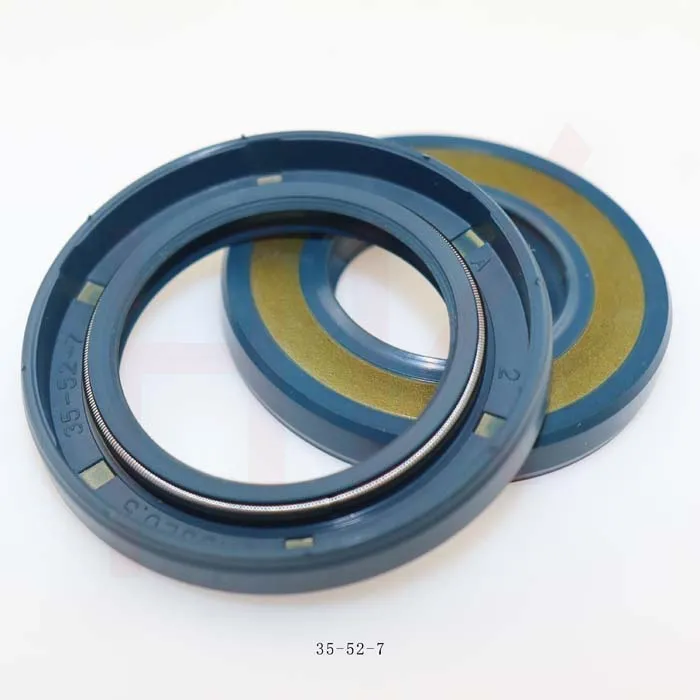Okt . 22, 2024 11:51 Back to list
Understanding Hydraulic Cylinder Oil Seals and Their Importance in Equipment Performance
Hydraulic Cylinder Oil Seal Essential Components for Efficient Operation
Hydraulic systems are pivotal in numerous applications, ranging from heavy machinery in construction to precision equipment in manufacturing. At the heart of these systems lies the hydraulic cylinder, responsible for converting hydraulic energy into mechanical work. However, the efficiency and reliability of hydraulic cylinders are largely dependent on one crucial component the oil seal. This article delves into the vital roles played by hydraulic cylinder oil seals, the types available, and best practices for maintenance and selection.
Understanding Hydraulic Cylinder Oil Seals
Hydraulic cylinder oil seals are devices designed to prevent hydraulic fluid from leaking out of the cylinder while simultaneously keeping contaminants from entering. These seals are essential for maintaining pressure within the hydraulic system, ensuring optimal performance and longevity of the hydraulic components.
Oil seals work by creating a barrier that confines the hydraulic fluid within the cylinder. When the cylinder rod moves in and out, the seal adjusts to this motion, preventing fluid loss. A properly functioning oil seal not only enhances efficiency but also protects the hydraulic cylinder and surrounding mechanisms from wear and damage caused by leaking oil or penetrating dirt and debris.
Types of Hydraulic Cylinder Oil Seals
There are several types of oil seals used in hydraulic cylinders, each tailored for specific applications and performance requirements. The most common types include
1. Static Seals These seals prevent fluid from leaking between stationary components. They are typically found at the ends of the cylinder, where the cylinder cap meets the housing.
2. Dynamic Seals Designed for moving parts, dynamic seals, such as rod seals and piston seals, enable the rod or piston to slide smoothly while preventing fluid leakage. Materials like polyurethane and elastomers are commonly used to create these seals, providing flexibility and durability.
3. Single-acting Seals Used in applications where the cylinder only needs to perform work in one direction, these seals are simpler in design and are easier to maintain.
4. Double-acting Seals Necessary for applications where fluid power is needed in both directions, these seals are more complex and are designed to handle pressure from both sides.
5. Wiper Seals These seals are often positioned at the outermost part of the cylinder to prevent contaminants from entering the hydraulic system. They scrape dirt and debris away from the rod as it extends and retracts.
Selecting the Right Oil Seal
Choosing the right hydraulic cylinder oil seal is crucial for ensuring optimal performance and durability. Factors to consider when selecting a seal include
hydraulic cylinder oil seal

- Material Compatibility The seal material must be compatible with the hydraulic fluid to ensure longevity. Common materials include nitrile rubber (NBR), fluorocarbon rubber (FKM), and polyurethane.
- Operating Conditions Consider temperature, pressure, and fluid type when selecting seals. Seals must withstand the specific conditions of the application.
- Size and Design The size of the seal must fit precisely into the designated grooves of the hydraulic cylinder. An incorrect fit can lead to premature failure.
- Motion Type Decide between static and dynamic seals based on whether the component will be stationary or in motion.
Maintenance Practices
To ensure the longevity of hydraulic cylinder oil seals, regular maintenance is essential. Here are some best practices to consider
1. Routine Inspections Regularly check for signs of wear, leakage, or damage. Early detection can prevent more significant failures.
2. Proper Installation Care should be taken during installation, ensuring that seals are correctly seated without twists or gaps.
3. Fluid Quality Use high-quality hydraulic fluid to reduce the risk of seal degradation. Contaminated fluid can shorten the life of oil seals substantially.
4. Environmental Conditions Maintain a clean operating environment to prevent dirt and debris from entering the hydraulic system.
5. Replace when Necessary Timely replacement of seals before visible wear can prevent costly downtime and repairs.
Conclusion
Hydraulic cylinder oil seals are indispensable for the efficient operation of hydraulic systems. Understanding their types, selection criteria, and maintenance practices will not only prolong the life of hydraulic cylinders but also enhance the overall performance of various machinery. As such, investing time and resources into proper seal management is a smart choice for any operation relying on hydraulic technology.
-
TCN Oil Seal Metal Ring Reinforcement for Heavy Machinery
NewsJul.25,2025
-
Rotary Lip Seal Spring-Loaded Design for High-Speed Applications
NewsJul.25,2025
-
Hydraulic Cylinder Seals Polyurethane Material for High-Impact Jobs
NewsJul.25,2025
-
High Pressure Oil Seal Polyurethane Coating Wear Resistance
NewsJul.25,2025
-
Dust Proof Seal Double Lip Design for Construction Equipment
NewsJul.25,2025
-
Hub Seal Polyurethane Wear Resistance in Agricultural Vehicles
NewsJul.25,2025
-
The Trans-formative Journey of Wheel Hub Oil Seals
NewsJun.06,2025
Products categories
















